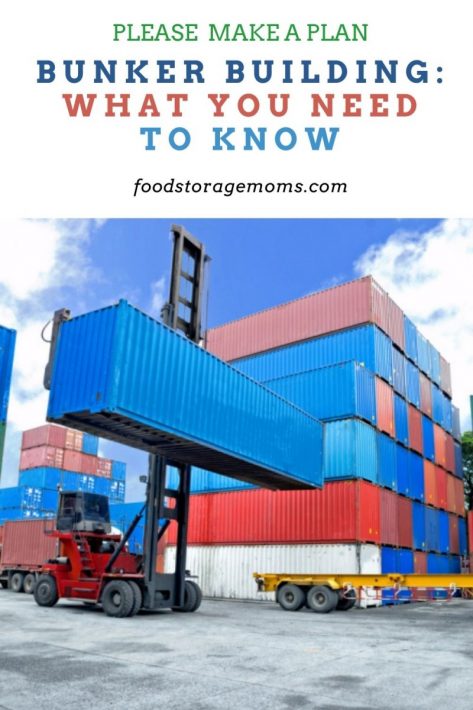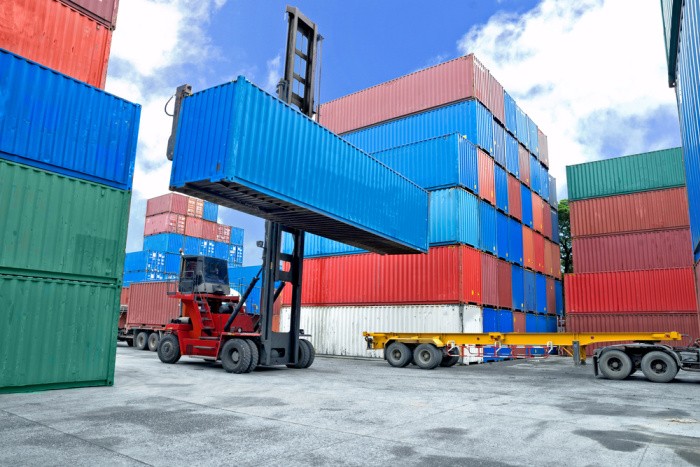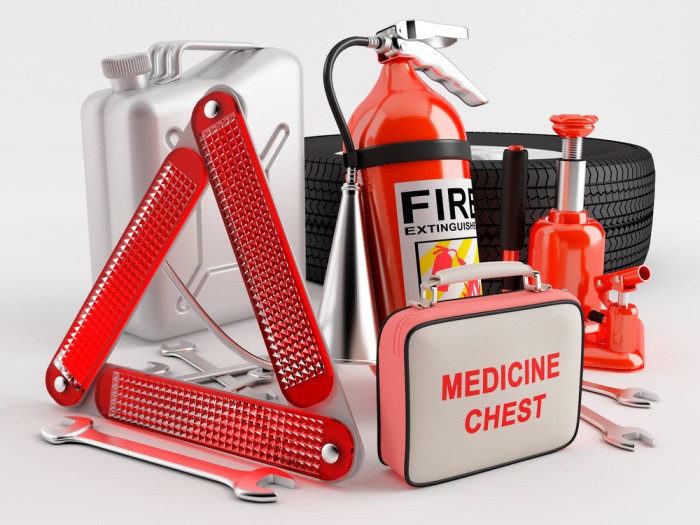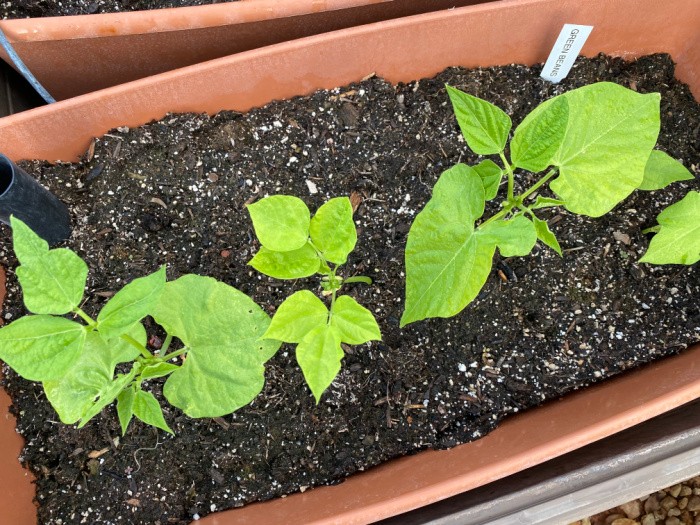Bunker Building: What You Need to Know
Today, it’s all about bunker building and what you need to know. In the present, we are living in a world that poses more threats and dangers than most of us have ever seen before, and it only seems to be getting worse. That should raise some real concern for each of us. Whether it’s natural disasters, riots, civil unrest, or nuclear fallout, there may come a point where our homes are no longer considered safe places to live, and having a bunker wouldn’t be such a crazy idea after all.
But taking that huge step requires money, resources, and hundreds of hours of brainstorming. Building the wrong type of bunker, or leaving out an important detail, could be the difference-maker whether your family survives or not. Here’s what you need to know about bunker building.
I quote Wikipedia, “A bunker is a defensive military fortification designed to protect people and valued materials from falling bombs or other attacks. Bunkers are mostly underground, in contrast to blockhouses which are mostly above ground.”
Bunker Building: What You Need to Know

Building a bunker isn’t something that you lie in bed thinking about one night, and then get up the next morning and get to work. Because of the many factors that come into play, it takes time and hours of planning to get it right. But you probably already know this if you’re a prepper. You’re also going to need enough resources and finances before you even break ground.
So before you begin, you’re going to need to get the right permits, contacts, blueprints, and floor plans. If you’re thinking about doing a majority of this project on your own, you will need large machinery to excavate all the dirt and move the materials into place. Here are other areas when it comes to bunker building that you need to think about.
Location
First and foremost, you need to keep the location of your bunker a closely held secret as much as possible. Discussing it with your neighbors, along with that guy at the hardware store, is only asking for trouble if a disaster hits. An ideal location would be a remote and heavily wooded area, that’s far enough away from your home where the disaster may potentially strike, but not so far that you can’t reach it in a reasonable amount of time. You won’t want it in an urban area where many people could possibly stumble upon it.
Another thing to avoid is constructing it too closely with the surrounding trees because their roots could end up damaging the structure. And lastly, find out what the water table is where you would like to build your bunker. You certainly don’t want to be dealing with a “sinking ship” from water damage when you’ve put so much of your time and finances into it.
Best Bunker Material
Going with the right building material for your bunker to handle all the different scenarios you could face is important. There are many preppers who choose to go with a large shipping container as their main structure for their bunker. It’s an easier, and more economical solution, though it’s not the best. You may have heard differently from other people, but concrete is probably the most resilient material you can go with.
It’s the strongest man made construction material that’s able to stand up to heat, fire, direct impact, weathering, and corrosion. It will also help trap the noise when your kids are fighting with one another. When concrete is combined with steel, it’s nearly indestructible. If one of your main concerns is building a bunker that’s capable of surviving a nuclear blast, plan on burying it at least 3 feet beneath the ground and with thickness of 2 1/2 to 3 feet.
Ventilation
Your bunker’s ventilation system is also something that you need to take very seriously because if your family doesn’t have clean air to breathe, they could become both physically and emotionally sick. Just imagine being cooped up somewhere for an extended period of time without fresh air. It wouldn’t be a tolerable situation.
You should consider having one, if not, two ventilation pipes to help you vent out cooking and sewage fumes, along with filtering out toxins. They should be designed in such a way that protects them from taking in dirt, snow, falling ash, or from becoming sabotaged.
Waste Disposal
If you’re being forced into your bunker in the first place, chances are, you won’t be able to step outside of it to take care of your business. This can make sanitation difficult, but not impossible. You will need some type of septic tank system installed so that your bunker doesn’t start smelling worse than an outhouse and your family getting terribly nauseated from it. In case you missed this post, Proper Waste Disposal During an Emergency
Heating and Lighting
Gathering large battery packs will be enough to suffice with heating and lighting during a short-term disaster, but you’re going to want something more stable for an extended stay. You’ll need one, or a few generators, and maybe even solar power to produce enough energy for your bunker. They need to be ventilated if you use gas or propane, so get advice on how to hook them up safely.
Emergency Essentials for Your Bunker
Think about all of the essentials that you would need in your bunker, especially if you were going to end up spending an extended period in there. The following is not an exhaustive list of essentials for your bunker, but they’re a good starting point to get you pointed in the right direction:
- Enough food stocked up in your storage area with a long shelf life (non-perishable foods)
- Large water supply (purification/filtration system and storage containers)
- Medical supplies
- Cooking supplies
- Cleaning/bathing facility
- Sleeping area
- Security equipment around the property
- Communication (weather radio, walkie-talkies, CB radio, etc.)
- Entertainment (you and your kids will need something to do to help pass the time)
As you can now clearly see, based on having to house all of these essentials plus you and your family, you’re going to need to have a bunker that’s big enough to accommodate everything. This is where a lot of thought and planning is needed. These are essential supplies that you should strongly consider as you plan the design of the bunker and what it needs to hold.
Bunker Building: What You Need to Know
Final Word
For those of you who are seriously considering building a bunker in the near future, I suggest you go with a building expert unless you have building experience. (Most of my readers probably don’t.) You need to make sure that you take all of these points into account, because if you don’t, you could jeopardize your family’s safety and health. May God Bless this world, Linda.
Copyright Images: Container Box Deposit photos_48655181_s-2019






















Linda, This is perfect information. Thank you so much
Hi Donna, I think we are all learning about bunkers a little at a time. Linda
I suggest watching Atlas bunkers on YouTube and looking at some fail videos they call him in to fix as well as looking at his systems. Pay attention to the doors, (article mentioned)air systems, duel exits and storage.
Be realistic in desires.
Don’t just bury a connex or school bus thinking you’ll be ok. It’s a start but it’s also easier to address some issues before it’s in the ground.
Hi Matt, great tip on the Atlas Bunkers! I hope people realize they need a HUGE plan before they start digging a hole or even thinking of burying a bunker. Linda
I love this! You really gotta have a plan when it comes to bunker building!
Hi Jess, I know, right? We can’t just dig a hole (with a backhoe) and dump a crate without making sure there are no leaks, needing air circulation, etc. The list goes on and on. Stay safe, Linda
One thing I have found out, try to have a better way to into your bunker than steps. Since
my knees are now in this bad of shape I have not been able to get into my storm shelter for
almost 2 years. I can not do steps anymore. I have to step up one step to get into my home and
it is painful. So you need to think about the future where you might be disabled or someone in your
family is disabled and can’t do steps.
Hi June, oh my goodness, you are so right!! Steps are bad for the elderly or disabled. Great reminder. Linda
June,
You are so right! I have terrible knees and have had multiple surgeries on my left knee. I could get down steps or a ladder, but not up the steps or ladder to get out. If we built a bunker, we would need to use the natural land shape to have an exit at ground level. This could be camoflaged by native bushes and plantings. However, if you enter this way, it would leave a trail. Depending on where you are building this bunker, this might increase the possibility of flooding.
We all know we are getting older and that with age will come physical limitations. Other things can cause physical limitations including falls, car accidents, strokes and medical conditions and just being in the wrong place at the wrong place. Anything you invest in your bunker would be useless if you or a loved family member cannot get in.
I was in my early 50’s when I fell in my kitchen and had major injuries to my left knee. After 7 surgeries in 4 months, I am lucky to still have my leg but it will never work the way it used to. If I had to walk into my bunker, I wouldn’t make it. Steps and ladders are on my avoid if at all possible list. (After my fall, we had to move from our split level house to a ranch home so I could get into and out of my house. On the happy side, I love my ranch home and wasn’t fond of the split level home.)
Hi Topaz, ranch homes are the best, I had to let the stairs go as well. Life is good on one level! Linda
Linda,
Your are right about concrete being the best construction material for a bunker. Another option is an old mine.
Shipping containers, while okay for above ground use, should never be buried. They are not designed for such loading, especially if you bury one and it rains soaking the ground above and along the sides. Such forces will cause them to collapse/buckle unless they are seriously reinforced.
Also, I’ve seen videos of buried bunkers being literally popped out of the ground by hydrostatic pressure. It’s not enough to know the water table, you must know how much it can rise and fall. In parts of Texas, Kansas and Oklahoma people who wanted storm shelters found out they couldn’t even have basements because of high water tables. Others literally had their storm shelters heaved out of the ground, or shoved badly off kilter by hydrostatic pressure following rainfall.
Hi Ray, wow, great comment! It gives more ideas to people to make a plan before they jump into whatever they decide to build. The storms the last few years have been crazy! I see people here digging out caves in the hills and I know they are building a bunker of sorts. Then a couple of weeks later, the hole is disguised. It’s really weird. Only a prepper like you and I (and our readers) would know what they are doing. LOL! Stay safe, Linda
I want a bunker like the movie “Blast From the Past” – now that is the way to go! :0) Not gonna happen but it’s fun to dream.
Hi Linda. My thoughts are for breathing. I realize it would be expensive but I also believe it is the way to go. If each person had an oxygen concentrator machine where it turns the air in your room to breathable oxygen via tubing that slips into each nostril t would be good. The only thing that would be a drawback is how to run it. Solar, gas, ?? Someone else will have to come up with how to keep it running. I think it might be possible for two people and perhaps the tubing could have a splitter so one machine could be used.
Hi Diane, that sounds like a great idea. I just looked and they are somewhat affordable depending on the size, model/brand, etc. I have solar that would work with it, I think because it works with a CPAP for 8-9 hours. Great tip, let’s see what others think. Thank you, Linda
A guy built a bunker system up in Canada for a large group of people using 14+ school buses, cement, etc. Fully plumbed and electrified, water system, showers…everything you can think of except a dehumidifier. He came back a year later and it was toast. water and moisture destroyed everything. Forget about a bunker. Get into good shape and learn to live like the indians did before the white man came.
Hi Larry, oh my gosh, that is awful, what a shame to lose all that work, time, money, and energy. I’m glad you shared that story, thanks so much! Linda